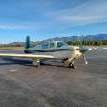Hottest cylinder CHT at cruise
Hottest CHT at cruise
68 members have voted
-
Members Online
- CCAS
- Planegary
- exM20K
- peterl
- atpdave
- bluehighwayflyer
- Jeff Dennerline
- IvanP
- Shadrach
- tbone40x
- Fly Boomer
- 201er
- StevenL757
- Grant_Waite
- M20E for me
- LANCECASPER
- eman1200
- richardbrochu27
- GeeBee
- ElkoRandy20J
- ArtVandelay
- Rick Junkin
- Steve Dawson
- FADEC
- Wingover
- toto
- RampMan
- N201MKTurbo
- Hector
- amillet
- Hank
- Ron McBride
- DonMuncy
- hubcap
- wombat
- nebhuskr123
- PT20J


Recommended Posts
Join the conversation
You can post now and register later. If you have an account, sign in now to post with your account.